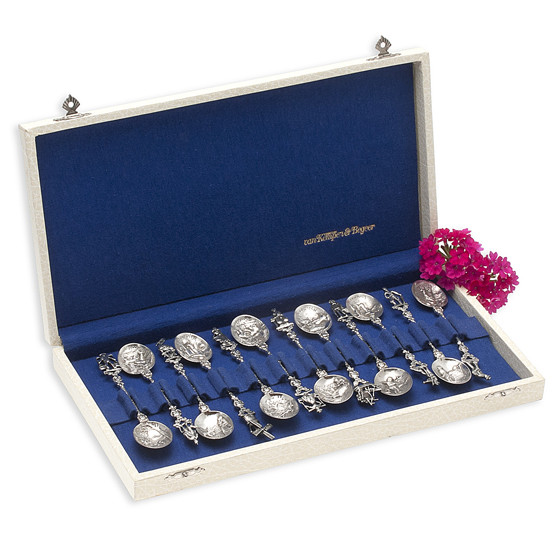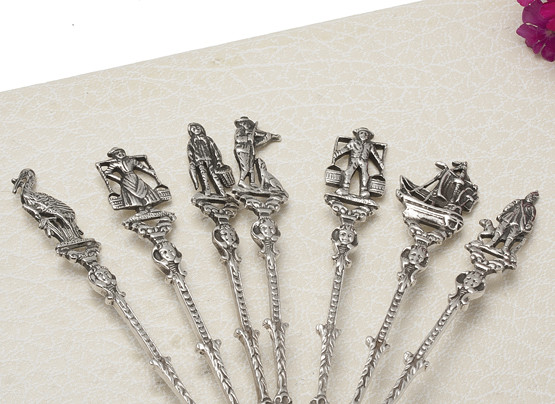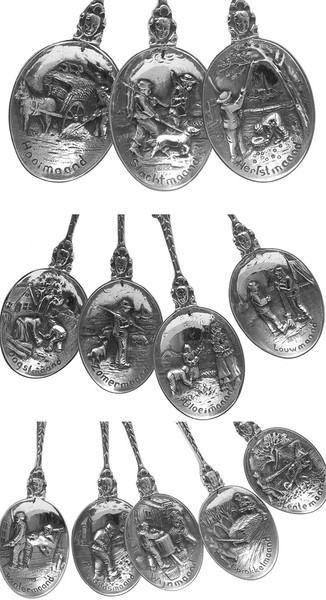In many European countries 800 is an accepted silver standard. In the 19th century in Germany and Belgium assay offices were closed, to safe money and the standard mark / guarantee mark are self applied by the maker/ importer.
The spoons could have been made in Belgium, for the Dutch market and tourist trade.
The Belgian law of 5 June 1868 put an end to any regulation with regard to the maker's mark, when entering into force on 1 July 1869. The gold and silver smiths were not obliged to have a maker's mark and did not have to register any longer and they did not have to present their work for assaying. Marks were no longer obliged. The content and form of the company mark could be chosen by themselves and the fineness mark mostly consisted of a number showing the alloy in thousandth parts, or A with number 1 or 2 for the silver standards, 900 or 800.
The Netherlands, in 1953 marking/ tax duty was abolished. Silversmiths/factories made those spoons for the Dutch market, to save extra production costs with and without maker's mark and had those spoons assayed for small work, the sword mark. Often the factories/silversmith's name was on the box only. And for export could mark silver fineness only, minimum 800 /835 or 925.
Van Kempen en Begeer;

Peter.









